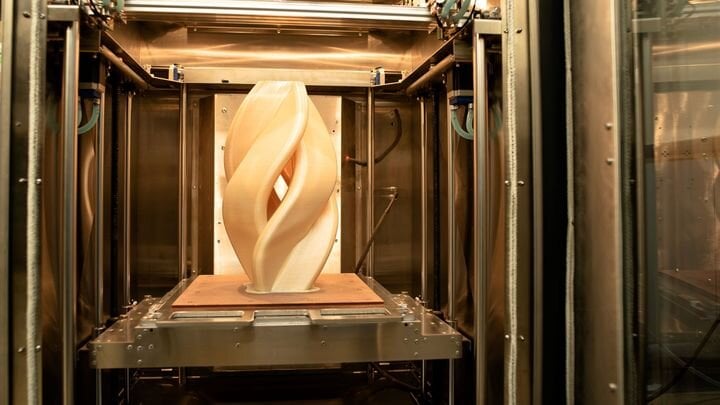
AON3D seems to be heading in a different direction than most high-temperature 3D printer manufacturers.
The Montreal-based company produces a well-regarded high-temperature 3D printer capable of producing high-quality parts in materials like PEEK and ULTEM.
There are many complications to printing high-temperature materials beyond the logistics of simply reaching sky-high temperatures. There are considerable effects from improperly dried material, thermal gradients, and more.
Most 3D printer manufacturers working in this space tend to develop hardware improvements to their systems to improve quality. For example, many have added drying systems, either integrated or standalone, to help with print quality.
This is not what AON3D is doing.
When I asked them recently if they had updated their printer, the answer was surprising:
“It’s the same printer.”
Ok, but how can you improve? It turns out they believe the machines are basically good enough at this point, and further improvements are really achieved only through advanced software techniques. They believe the key to success is now more intelligence in 3D printing.
This could make a great deal of sense, as printing PEEK is a very complex matter. But how exactly are they tackling this issue?
AON3D is using thermal simulations of the print job, combined with a machine learning approach. This enables the printing process to be more predictable and able to avoid issues that arise from thermal problems.
Their new system can show predicted flaws in a print job that can then be rectified with some tweaks to the print job parameters. This creates a kind of feedback loop that can gradually improve the print job — even before it actually starts.
AON3D told us they are now very close to achieving “full automation” of this new process and expect to achieve it in the summer. When this hits AON3D customers is another question, however.
This is a very interesting development as it confirms a suspicion I’ve had for a while now: the hardware technology of many types of 3D printers is beginning to plateau. Whereas in the past, we saw dramatic improvements in systems from year to year, we don’t see that much anymore.
Perhaps the only major change this year is the adoption of high-speed firmware, such as that from Klipper. This feature allows some machines to run two to five times faster than what was considered normal. However, beyond that change, there are few major changes seen in the market.
Meanwhile, there are plenty of opportunities for software improvement, particularly considering recent developments in machine learning and AI tools. These can be applied to 3D printing in ways we haven’t yet realized, but you can be sure that multiple parties are working behind the scenes to do so.
One of them is AON3D.
Via AON3D
